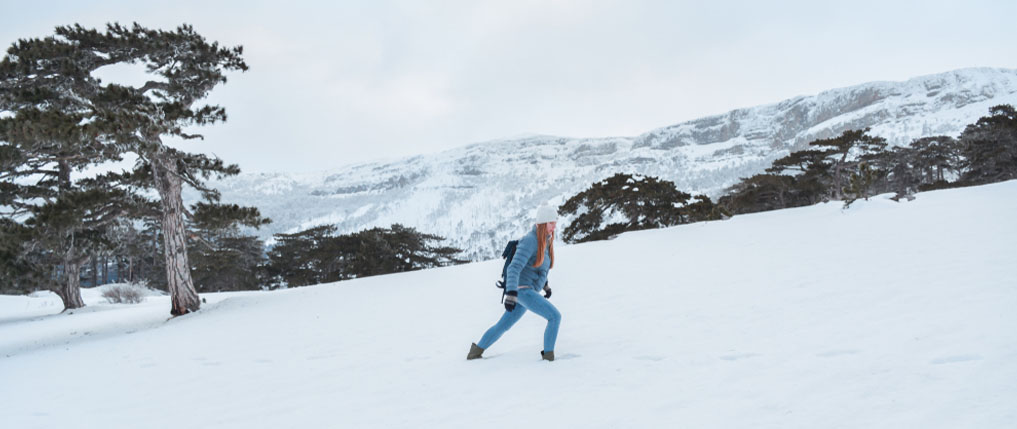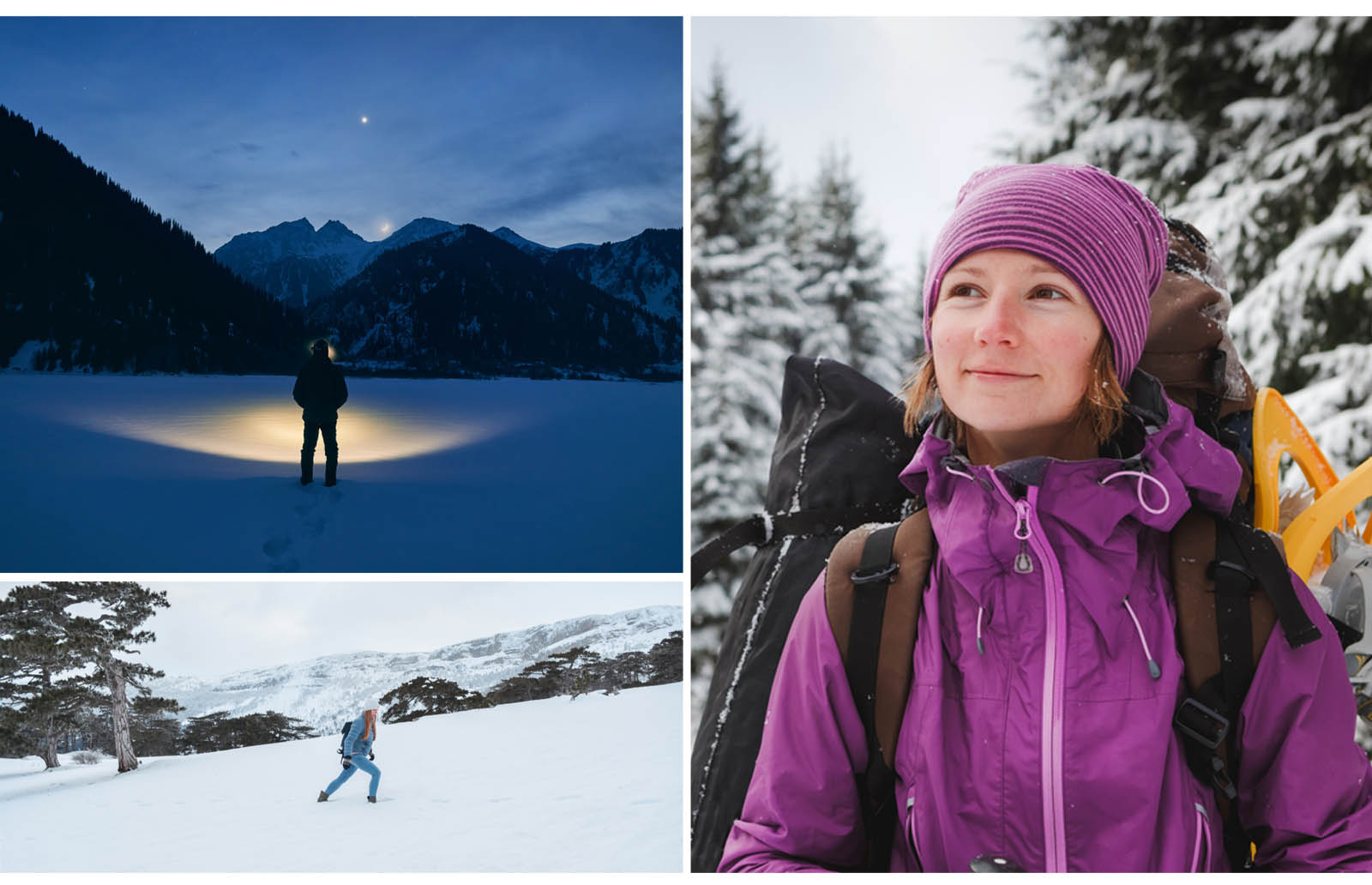What to Wear Hiking in Winter
September 17, 2020

Winter is a beautiful time to go for a hike. The crisp air in your lungs and the view of land with freshly fallen snow–there’s nothing quite like it! But to make hiking in winter more enjoyable, it helps to know how to stay warm. Here are tips on what to wear hiking in winter, from selecting moisture-wicking fabrics to dressing in layers from head to toe. Plus, we list what extra gear and winter survival equipment you need to stay ultra-warm in emergencies.
The Best Clothing for Winter Hikes
When choosing what to wear hiking in winter, remember to protect your extremities–like fingers, toes, nose and ears–from frostbite. Choose the right garments and materials, but also ensure they fit correctly and are not too tight. Tight clothing, boots and gloves can restrict blood circulation, increasing the chance of frostbite.
Three Layers
When hiking in frigid winter weather, it’s essential to dress in layers–three to be exact. You need a moisture-wicking base layer, a warmer insulating mid-layer and a shell-like outer layer to keep out wind and moisture. As you hike, you can get hot and work up a sweat, so you need layers to stay warm yet offer the flexibility to remove garments to stay as dry as possible and prevent hypothermia. When choosing layers, avoid cotton, which takes longer to dry. Instead, aim for synthetics, fleece and wool materials that will draw perspiration away from your skin.
Gloves
Protect extremities like your fingers and wear two layers of gloves. Similar to layering your main body, your hands need a lightweight to midweight, moisture-wicking base layer of fleece gloves. Over the base layer glove, cover with a waterproof shell-like mitten. Accidents can happen, so always carry an extra pair in your backpack!
Boots and Socks
Your feet will be treading lots of wet snow, so proper footwear is essential. Under boots, wear a pair of warm synthetic or wool socks. Like gloves, carry an extra pair if they get too soaked. Over the socks, wear a pair of waterproof insulated boots. Lastly, strap on a couple of gaiters to your boots. Even if you don’t plan to tread ice and need the extra grip, gaiters can keep snow from entering your boots and add a bit of warmth.
Headgear
Like your hands, your head and face have extremities–ears, nose and cheeks–that need protection from frostbite. Since your head can lose tons of heat, a winter hat is critical. Choose a wool beanie or, to protect the nose and cheeks, wear a full-face balaclava or neck gaiter. Find a winter hat long enough to cover your ears or use a headband.
Goggles and Sunglasses
In winter, January especially, the sun is closer to the earth. If you thought sunglasses were only for beach days, think again! Another item to wear hiking in winter is a pair of tinted, UV protective sunglasses. If winds are extreme, goggles can keep flurries and other debris out of your eyes. Plus, they can keep your eyes from drying out.
Other Must-Have Gear

Anytime you hike, you should carry along the 10 essentials. Know these by heart and keep them in a heavy-duty backpack at all times to always be prepared for emergency situations. Carrying these essentials could mean saving a life in dire winter survival situations. However, when hiking in winter, these are the most critical pieces to have at all times:
Headlamp
Night falls faster in winter, so an LED headlamp comes in super handy. Plus, many headlamps are equipped with a red emergency signaling mode that can flash “SOS” in Morse code should you need to alert help. Always carry fresh batteries, too–just in case!
Sunscreen
For the exact same reason you need sunglasses in winter, you need sunscreen! The sun is closer, after all. It’s quite deceiving, but your skin can still burn in the cold air and the snow can reflect it back up at you. While most of you is covered in layers, remember to apply sunscreen to bare spots like your nose, chin and neck.
Hand Warmers
Whether a classic refillable fuel Zippo or a modern rechargeable device, hand warmers stored in pockets or glove linings can keep your fingers warm and dexterous. Hand warmers can also keep batteries from dying in freezing weather. Lithium batteries are not so much of an issue, but keeping an alkaline headlamp, GPS and other devices in working order is important.
Hiking is a wonderful way to stay active and take in the beauty of nature. But in the colder seasons, with fresh white snow on the ground, it’s a winter wonderland. Just remember to respect the environment and lessen the human impact by practicing the seven “Leave No Trace” principles.

SIGN UP FOR EXCLUSIVE OFFERS
Sign up for our newsletter and get exclusive access to new product launches, special offers and much more.
RELATED BLOGS














